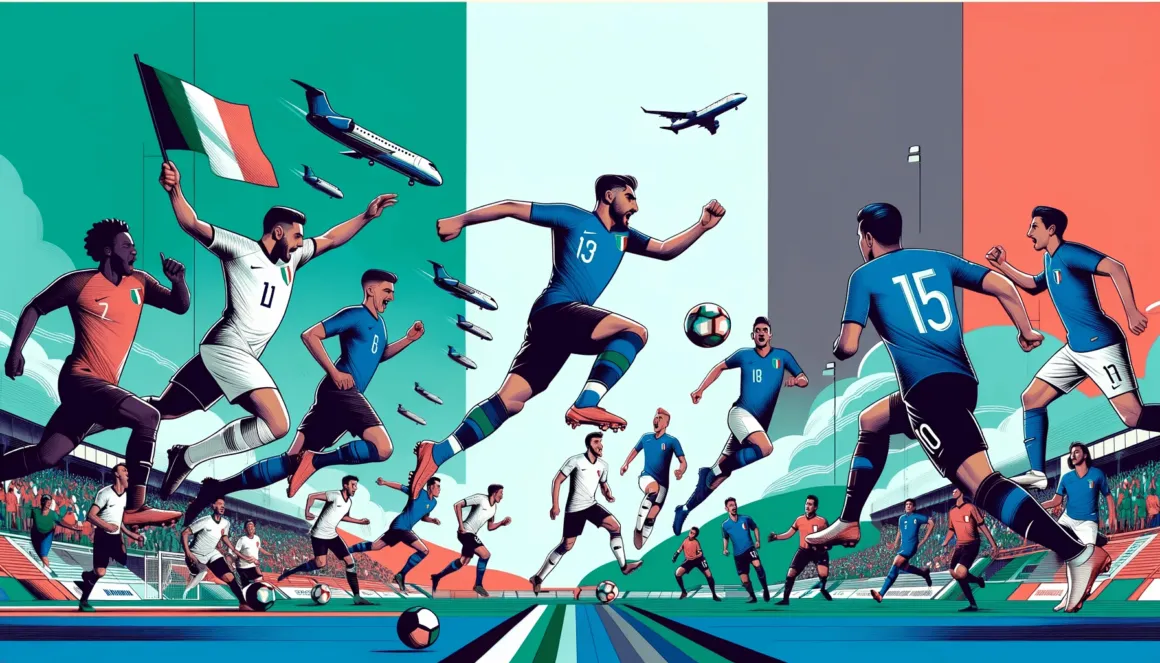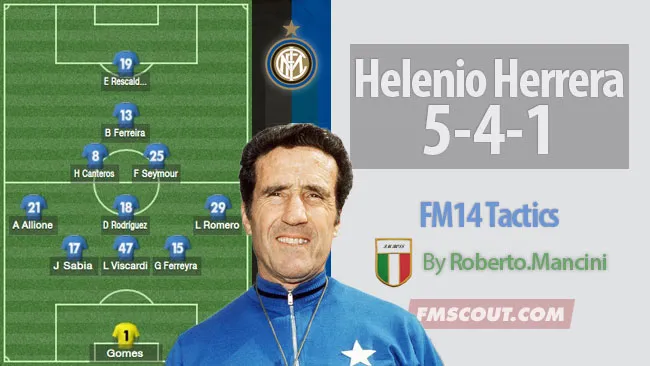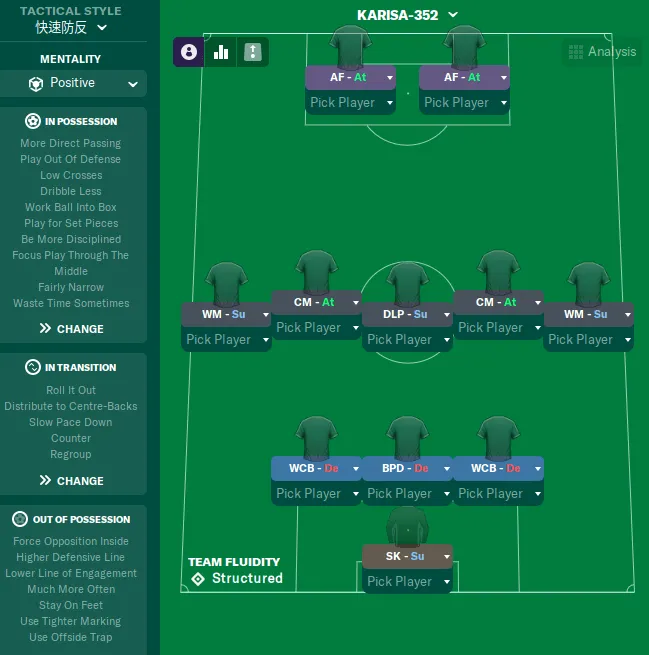Football, or soccer, is a game loved by millions all over the world. It has evolved over the years and different styles and tactics have emerged that have shaped the way the game is played today. One such tactic that has left its mark on the beautiful game is Catenaccio.
Catenaccio is an Italian defensive system that was first used in the 1950s by famed coach Helenio Herrera. It gained popularity in the 1960s and 1970s when it was adopted by successful Italian club teams like Inter Milan and the Italian national team. Its success in producing strong defensive performances and winning titles has earned it a reputation as one of the most effective tactics in football.
In this article, we will delve into the intricacies of Catenaccio and explore how it works, its history, its role in modern football, and how it can be countered. So grab your whiteboard and marker, and let’s dive into the ultimate guide to Catenaccio.

1. What is Catenaccio?
Catenaccio, which translates to “door bolt” in Italian, is a defensive system in football that focuses on maintaining a compact and organized defense to prevent the opponent from scoring. It is characterized by a highly disciplined and structured formation, with players often positioned close to each other to limit space for the opposition to attack. This tactic aims to restrict the opponent’s attacking options and force them into making mistakes or taking low-quality shots.
The key element of Catenaccio is the use of a sweeper, also known as the “libero”, who operates behind the defensive line. This player acts as the last line of defense and has the freedom to roam across the field to sweep up any loose balls and provide cover for the defenders.
Catenaccio is often associated with a defensive and negative style of play, but it is a highly strategic and disciplined approach that requires a high level of tactical understanding and execution from the players. It has been used by teams at all levels of football, from amateur clubs to top professional teams, and has proven to be a successful tactic in producing strong defensive performances.
2. The History of Catenaccio
Evolution from WM formation to Catenaccio
To fully understand the origins of Catenaccio, we must first look back at the history of football tactics. In the early 1900s, the most popular formation was the 2-3-5, which consisted of two fullbacks, three halfbacks, and five forwards. This formation focused on attacking and had little emphasis on defending, resulting in high-scoring matches.
In the 1920s, Herbert Chapman, a legendary English coach, introduced the WM formation, also known as the 3-2-2-3. This formation had three defenders, two wing-halves, two inside forwards, and three attackers. The WM was a more balanced formation that allowed for better control of the midfield and greater defensive stability.
The WM formation became very popular in England and Europe, and many teams adopted it, including Italian clubs. However, Italian football was still heavily influenced by the defensive-minded style of play, or “catenacciaro”, which focused on disrupting the opponent’s attacks rather than controlling the game.
In the 1950s, Ferruccio Valcareggi, an Italian coach, modified the WM formation to create the 5-3-2 formation, which later evolved into Catenaccio. Valcareggi’s idea was to have a sweeper who would be responsible for guarding against any counter-attacks, while the other four defenders formed a solid wall in front of the goalkeeper. This formation was then perfected by Helenio Herrera, who used it with great success at Inter Milan.
Influence of Helenio Herrera
Helenio Herrera, a renowned Argentine-Italian coach, was the mastermind behind Catenaccio’s rise to fame in the 1960s and 1970s. He took over as manager of Inter Milan in 1960 and immediately implemented his version of Catenaccio, which was based on Valcareggi’s 5-3-2 formation.
Under Herrera, Inter Milan won three consecutive Serie A titles and two European Cups, becoming the first team to achieve the treble (winning the league, domestic cup, and European Cup) in the 1964-65 season. His tactical approach, which focused on strong defensive organization and quick counter-attacks, revolutionized Italian football and made Catenaccio a widely used tactic.
Herrera’s strict disciplinarian approach to coaching and his attention to detail in training and tactics were crucial in the success of Catenaccio. He demanded total commitment from his players, both on and off the field, and instilled a winning mentality that made Inter Milan one of the most feared teams in Europe.
Successes and failures of Catenaccio in Italian football
After Herrera’s success at Inter Milan, many other Italian clubs adopted Catenaccio, which led to a period of dominance for Italian teams in European competitions. In the 1960s and 1970s, Italian clubs won seven out of ten European Cups, with Catenaccio being the driving force behind their success.
In addition to Inter Milan, other Italian teams like A.C. Milan, Juventus, and Napoli also achieved great success with Catenaccio. However, this style of play was not universally praised, and it received criticism for being overly defensive and negative.
One of the most notable criticisms came during the 1969-70 European Cup final between Feyenoord and A.C. Milan. The Dutch team, who had a more attacking approach, defeated Milan 2-1, and the match is still remembered as a victory for attacking football over Catenaccio.
Despite its critics, Catenaccio continued to be a successful tactic in Italian football and was credited with producing some of the best defenders and goalkeepers in the world. Its influence spread to other parts of Europe, and it became a popular defensive system in countries like Spain, France, and England.
3. Tactical Analysis of Catenaccio

Formation and positioning of players
Catenaccio is primarily based on a 5-3-2 formation, with five defenders, three midfielders, and two forwards. However, there have been variations in formations over the years, with some teams using a 4-5-1 or a 3-4-3 formation.
The key element of Catenaccio is the sweeper, also known as the “libero”. This player operates behind the defensive line and has the freedom to move across the field to support the defenders or initiate counter-attacks. The sweeper acts as the last line of defense and must be a skilled player who can read the game and make quick decisions.
In front of the sweeper, there are two central defenders, known as the “stopper” and “cover”. The stopper is responsible for marking the opponent’s striker and making direct tackles, while the cover provides cover for the stopper and intercepts any passes that get past the stopper.
On either side of the central defenders, there are two fullbacks who have both attacking and defensive responsibilities. They must provide width in attack and close down opposition wingers in defense. The midfield trio consists of a holding midfielder, who sits in front of the defense and helps shield the backline, and two central midfielders who provide support in both defense and attack.
Roles and responsibilities of each position
To understand how Catenaccio works, let’s look at the roles and responsibilities of each position on the field:
- Sweeper (“Libero”): As mentioned earlier, the sweeper is the key player in Catenaccio. Their primary role is to support the defenders and act as the last line of defense. They have the freedom to roam across the field, providing cover when needed and initiating counter-attacks.
- Central Defenders (“Stopper” and “Cover”): The two central defenders work in tandem to form a solid defensive line. The stopper marks the opponents’ striker and makes direct tackles, while the cover provides cover for the stopper and intercepts any passes that get past the stopper.
- Fullbacks: The two fullbacks have a crucial role to play in Catenaccio. They must provide width in attack and close down opposition wingers in defense. They also have the responsibility of tracking back and covering for the central defenders when needed.
- Holding Midfielder: The holding midfielder sits in front of the defense and acts as the link between the defense and midfield. They must shield the backline and prevent opponents from getting through the middle of the field.
- Central Midfielders: The two central midfielders provide support in both defense and attack. They must be able to track back and help defend, while also contributing to the team’s build-up play and creating chances for the forwards.
Defensive principles and strategies
Catenaccio is all about defending as a unit and maintaining a compact shape to limit space for the opponent to attack. Some of the key defensive principles and strategies used in Catenaccio include:
- Zonal marking: Rather than man-to-man marking, Catenaccio relies on zonal marking, where each player is responsible for a specific area of the pitch. This helps in maintaining a solid defensive structure and prevents the opposition from finding gaps in the defense.
- Counter-pressing: Catenaccio teams are known for their intense counter-pressing, which involves quickly pressing the opponent after losing possession to win the ball back. This tactic helps in preventing the opposition from building up play and launching attacks.
- Offside trap: The offside trap is a risky but effective strategy used in Catenaccio. The defense moves forward in unison, hoping to catch the opposing team’s attackers offside and disrupt their attacking flow.
- Patient defending: Catenaccio teams are masters at patient defending, where they remain organized and disciplined, forcing the opponent to make mistakes or take low-quality shots. This tactic requires a lot of concentration and discipline from the defenders.
4. Modern Adaptations of Catenaccio
Variations in formations and tactics
While the 5-3-2 formation is still the most commonly used in Catenaccio, there have been variations in recent years. Some teams have adopted a 4-5-1 formation, with an extra midfielder providing more defensive cover and support for the lone striker.
Other teams have also experimented with a 3-4-3 formation, using three central defenders and two wing-backs who provide width in attack and support the defense when needed. These variations allow for more flexibility and adaptability in different situations.
Use of technology and data analysis
In modern football, technology and data analysis have become crucial tools for coaches to understand and improve their team’s performance. Catenaccio teams have also embraced these tools to analyze their opponents’ tactics and find ways to exploit their weaknesses.
With advanced video analysis software and statistical data, coaches can identify patterns and tendencies in their opponents’ play, making it easier to come up with effective strategies to counter them. This use of technology has made Catenaccio even more effective and difficult to break down.
Impact on modern football
Catenaccio has had a significant impact on modern football, both in terms of its use and its influence on other tactics. Many coaches continue to use elements of Catenaccio in their defensive strategies, including zonal marking, counter-pressing, and patient defending.
Moreover, Catenaccio’s success has also led to the rise of other defensive systems, such as the “park the bus” tactic, where a team defends deep and relies on quick counter-attacks to score goals. This shows how Catenaccio has influenced the evolution of defensive tactics in football.
5. Countering Catenaccio

Exploiting the weaknesses of Catenaccio
While Catenaccio has proven to be an effective tactic, it does have its weaknesses. The most significant weakness is its focus on defending, which can leave the team vulnerable in attack. This can be exploited by teams that are adept at counter-attacking and possess pacey and skillful attackers.
Catenaccio’s reliance on a disciplined and organized defense also means that errors and mistakes can be costly. Quick and incisive passing and movement can disorganize the defense and create gaps to exploit.
Strategies for breaking down a Catenaccio defense
To break down a Catenaccio defense, teams need to be patient and precise in their attacks. They must remain calm and composed and avoid rushing their plays, as it can play into the hands of the Catenaccio team.
One effective strategy is to draw the defenders out of position by moving the ball quickly and creating overloads in certain areas of the pitch. This will force the defenders to move and open up spaces for attackers to exploit.
Another strategy is to utilize wide players and deliver crosses into the box, forcing the Catenaccio team to defend deeper and potentially leaving the sweeper isolated. This can create opportunities for through balls and diagonal runs behind the defense.
Examples of successful counters
Many teams have successfully countered Catenaccio over the years, with some notable examples being:
- In the 2005 Champions League final, Liverpool famously came back from a 3-0 deficit to defeat A.C Milan on penalties. The Italian side used a defensive approach with Catenaccio tactics, but Liverpool’s attacking intensity and quick goals disrupted their game plan.
- In the 2012 Champions League semi-final, Bayern Munich defeated Real Madrid 3-1 on penalties after a 3-3 aggregate score. Real Madrid had been using a Catenaccio-inspired 4-2-3-1 formation, but Bayern’s attacking intensity and high pressing proved too much for them to handle.
- In the 2018 World Cup, Belgium defeated Brazil 2-1 in the quarter-finals. Brazil had been using a 4-2-3-1 formation, which was similar to Catenaccio, but Belgium’s quick counter-attacks led by their pacey forwards caused havoc in the Brazilian defense.
6. The Future of Catenaccio and its Legacy
Current trends and use in football
Despite some criticisms and attempts to counter it, Catenaccio remains a popular tactic in modern football. Many top teams continue to use elements of Catenaccio in their defensive strategies, and it has proven to be successful in producing solid defensive performances.
One current trend is the use of a “false sweeper”, where a midfielder drops deep to provide cover for the defense instead of a designated sweeper. This allows the team to have an extra player in midfield and provides more options in attack.
Evolution and potential changes
As with any tactic, Catenaccio is always evolving, and we may see further variations and adaptations in the future. With the increasing use of data analysis and technology, coaches may find new ways to make Catenaccio even more effective and difficult to break down.
Additionally, as football becomes more physically demanding and fast-paced, we may see teams adopting a more proactive approach to defending rather than sitting back and waiting for the opponent to make mistakes.
Impact on the future of the game
Catenaccio has left a lasting impact on football, both in terms of its tactics and its influence on other styles of play. Its success has shown that a disciplined and organized defense can be just as effective as an attacking approach, and it continues to be used by top teams all over the world.
However, with football constantly evolving and new tactics emerging, it will be interesting to see how Catenaccio continues to evolve and adapt in the future.
Conclusion
Catenaccio may be seen as a defensive and negative style of play by some, but its effectiveness and success cannot be denied. Its impact on Italian football and the game as a whole has been significant, and it continues to be used by top teams around the world.
In this ultimate guide to Catenaccio, we have explored its history, tactical analysis, modern adaptations, and strategies for countering it. While it may have its weaknesses, Catenaccio remains a formidable tactic that requires a high level of discipline, organization, and tactical understanding from players. So the next time you watch a match and see a team playing with a compact defense and quick counter-attacks, remember the legacy of Catenaccio and its contribution to the beautiful game.